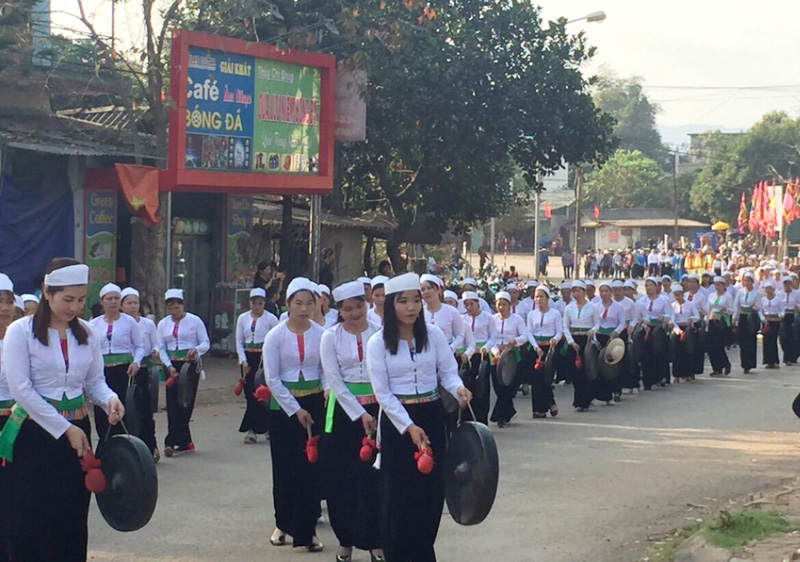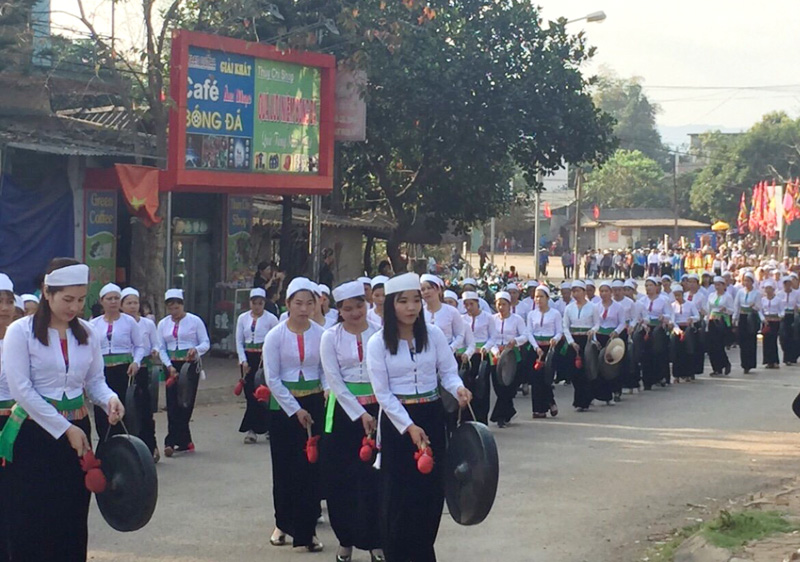
(HBO) - The Muong Thang new crop festival opened on February 10 in Dung Phong commune, Cao Phong district of the northern mountainous province of Hoa Binh.
A unique gong performance
at the Muong Thang newcrop festival
The Muong Thang newcrop festival, also called the ploughing festival,
includes the ritual and festive activities. The rituals take place at the shrine of Dong Nhat hamlet, where the
village’s tutelary gods are worshipped. They include the palanquin procession
from the shrine to the place where the festival is held and vice versa. The procession
is solemnly held with flags, parasols and offerings with the participation of the
elderly, monks and crowds of local people.
The festive activities include folk
games such as ‘con’ ball throwing, duck catching and other sports, as well as a
singing contest, gong and folk music performances which are deeply imbued with the
Muong people’s cultural identity.
The festival offers a chance for
locals to express their gratitude towards and respect for gods who contributed
to forming the Muong land. Through the festival, local residents pray for a happy
and successful New Year, with positive achievements in socio-economic
development.
It is also a good opportunity
for Muong Thang people to meet and join together in exchange activities, thus tightening
the solidarity in the community./.
The People’s Committee of Lac Son district held a ceremony on April 28 to receive the provincial relic certificate for the ancient rock carving site at Suoi Co stream, located in My Thanh commune.
A special music show titled "The country is in the fullness of joy” has been held at Hoa Binh Square in Hoa Binh city in celebration of the 50th anniversary of the liberation of the South and national reunification (April 30, 1975–2025).
The People's Committee of Lo Son commune, Tan Lac district, has organised the local annual traditional stream fishing festival on April 19 - 20.
As a land deeply intertwined with human history and Vietnam’s millennia-long journey of nation-building and defence, Hoa Binh is often revered for its epic tales and legends.
Residents of Hoa Binh boast a rich cultural identity, reflected in their unique language, traditional attire, customs, and folk melodies – described as "sweet as honey, clear as a mountain stream.”
Lac Son district’s Vu ban town held the 2025 Truong Kha temple festival on April 12–13 (the 15th–16th days of the third lunar month). Since its revival in 2019, the festival has been organised every three years, preserving valuable intangible heritage while meeting the community’s cultural and spiritual needs.



